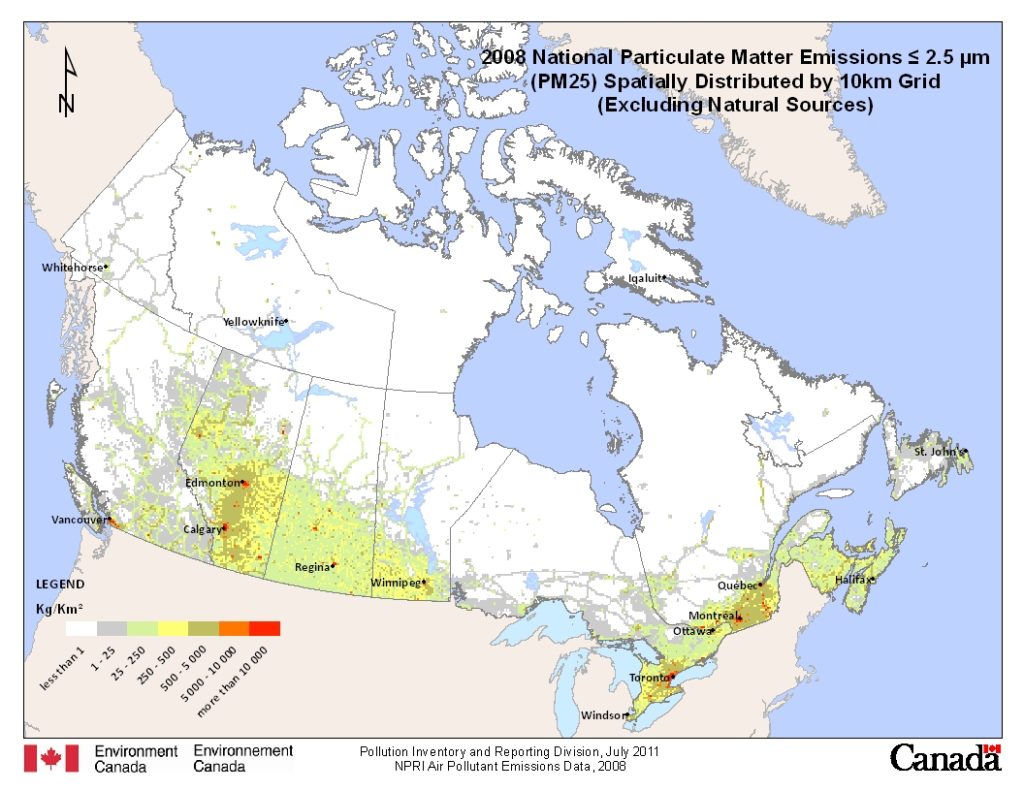Poor Air Quality and its Harmful Effects
Poor air quality in the country is causing you more harm than you think. Smoke from vehicle emissions, burning garbage and industrial activities all contribute to air pollution. Depending on the span of time you are exposed, air pollution can irritate your eyes, nose, throat and lungs, cause shortness of breath, worsen asthma and other respiratory conditions, and affect your heart and cardiovascular system.
Air Quality: A Hot Topic
In 1991, to identify the effects of air pollutants on human health in Canada, the Canadian Council of Ministers of the Environment developed a plan for the management of nitrogen oxides (NOx) and volatile organic compounds (VOCs). NOx and VOCs are the two families of pollutants that are responsible for the formation of ground-level ozone. Hence, for the reduction of VOCs and NOx, several codes of practice and guidelines were developed. In 2005, CCME published the National Framework for Petroleum Refinery Emissions Reductions.Canada - A strong believer in keeping the air, Clean, Fresh and Safe
To understand the change in our air quality and the potential impacts on our health and the environment, tracking the amount of pollution in Canada's air is vital. Environment and Climate Change Canada, working with its partners in government and industry, has made measurements of air quality across Canada possible. The main aim of seeking this information is to determine the sources of air pollution in the country, and how it impacts our air quality. Emissions Reporting and Inventories Environment and Climate Change Canada gather information on air pollution produced by industrial activities. Industrial facilities report information on their pollutant releases annually, as demanded by the Canadian Environmental Protection Act (CEPA 1999). This data is assembled into emissions inventories, which are used to recognize sources of industrial air pollution in Canada, and the efficiency of regulations.Alberta poses significant risks to the air quality
Due to the northern latitude and diverse landscapes and associated environmental gradients of Alberta– including semi-arid regions in the south, mountain/alpine systems in the west, aspen parkland in the middle, and boreal forest with vast wetland complexes in the north –local and regional changes in climate are predicted to pose major risks to the air quality. Furthermore, Alberta’s substantial oil and gas and natural resource-based economies make the province a major per capita contributor to national greenhouse gas emissions, and consequentially, impact the global climate system. Acknowledging this, Alberta has become a key player in national and international climate change policy development, agreements and actions.PM2.5 in Canada
Sulphur dioxide (SO2) and nitrogen oxide (NOx) emissions are of particular concern to the public for various health reasons. These emissions not only cause direct harm to humans but also react in the atmosphere to create fine particulate matter (PM2.5). Unfortunately, PM2.5 is responsible for asthma attacks, hospitalizations and even premature deaths.
Particulate Matter ≤ 2.5 µm (PM2.5) Emission Density in 2008 - Alberta shows a general increase of emissions from north to south, beginning at less than 1 kg/km² in a few north eastern parts, to more than 10 000 kg/km² in Calgary and Edmonton. Most of British Columbia is covered by the less than 1 kg/km² and 1 - 25 kg/km² emission ranges. Source : Environment and Climate Change Canada

